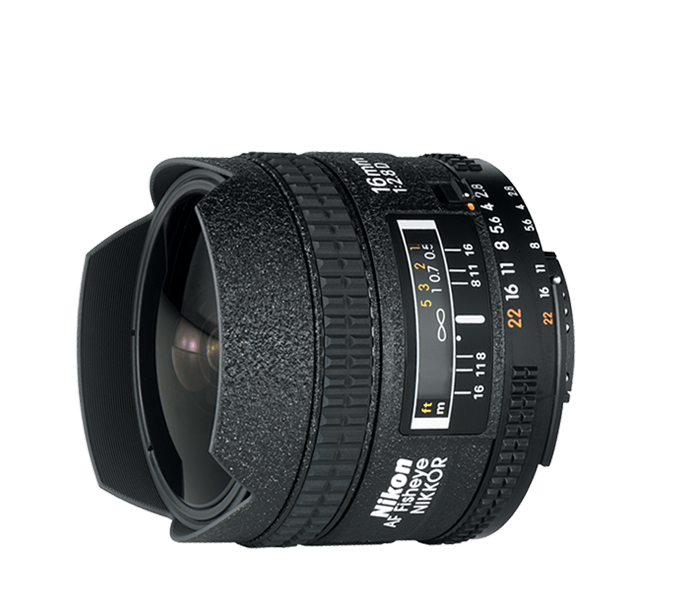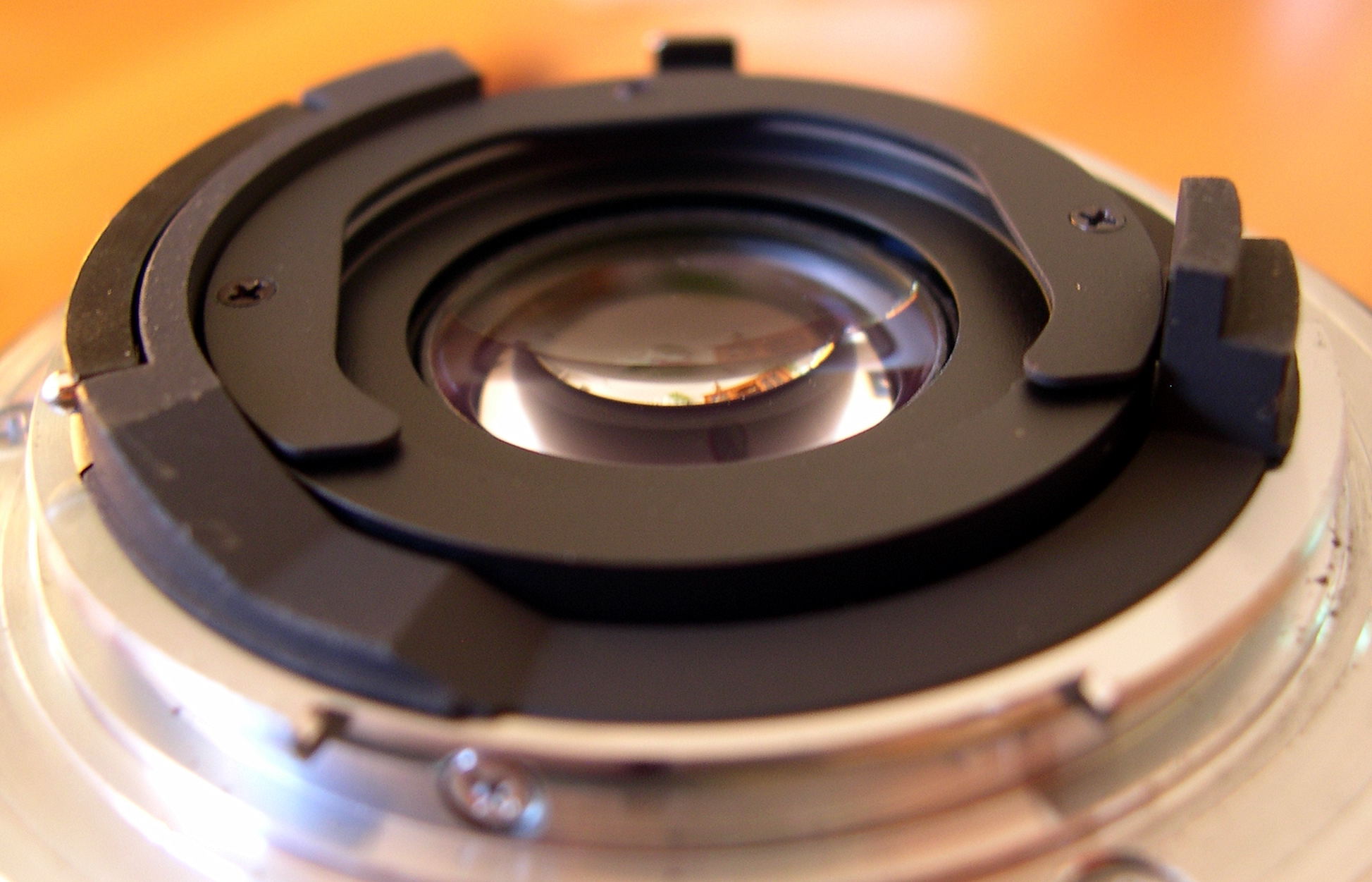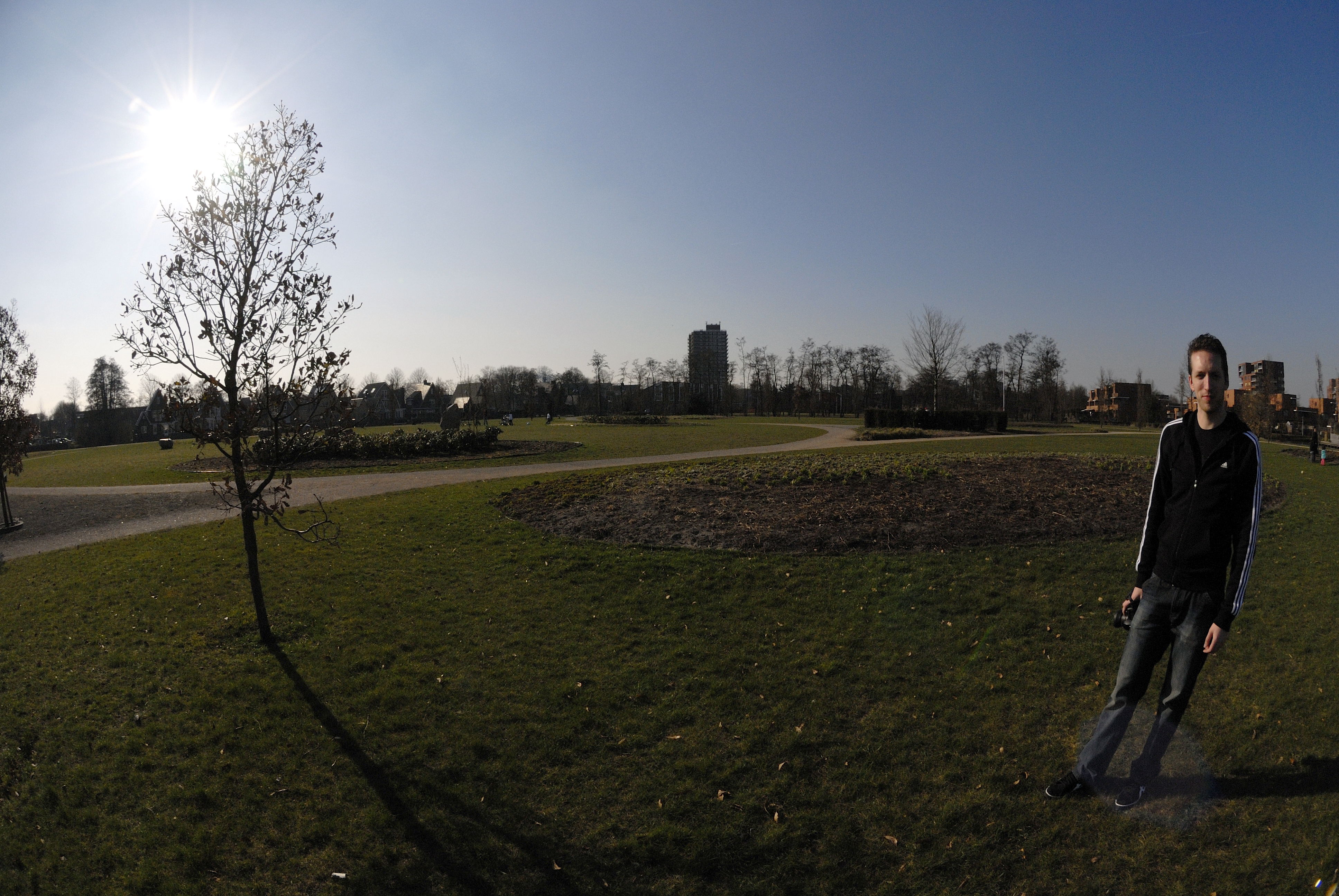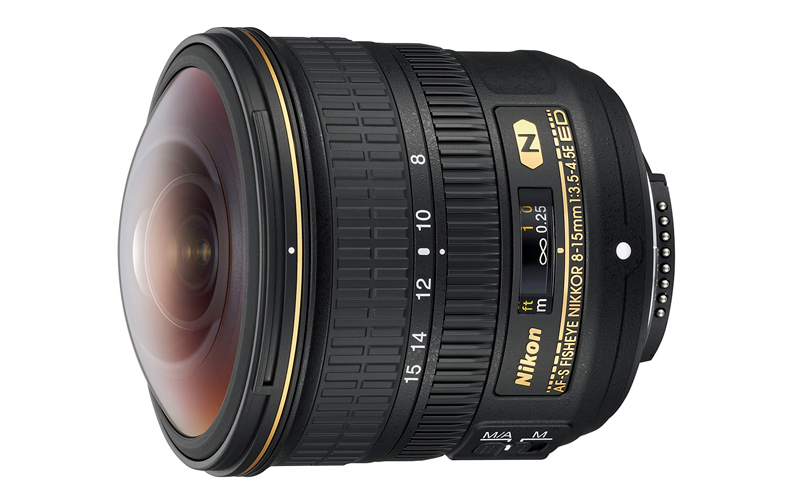Nikkor autofocus fisheye lenses
A so-called fisheye lens is clearly not meant to shoot portraits (left 10.5 mm. fisheye; right 70 mm. portrait lens)!
It is a bit odd that lens producers, including Nikon Corporation, have put fisheye lenses on the market featuring auto focus. The depth of field (DOF) of these lenses is so immense, that focusing is almost unnecessary. Manufacturing an auto focus lens makes the use of light (synthetic) material necessary, which does not always strengthen the lens construction. Nevertheless Nikon introduced two auto focus fisheye lenses with special features. AND - since May 2017 - a very special Zoom-Fisheyelens!! AF-Fisheye-Nikkor 2.8/16 mm.
This lens was born as a manual fisheye lens in 1978. More details can be found in the MF-lenses chapter on this web site. The auto focus version of this lens was introduced in August 1993. The optical design didn´t change: all versions have 8 elements in 5 groups. The AF-version is just some 20 grams lighter in weight. It has an viewing angle of 180° when used on a SLR film camera; used on a DX camera it has the viewing angle of an equivalent wide-angle lens with a focal length of approx. 28 mm. For making use of the various automatic flash programs this lens features the ´D´- distance data transfer. To give it a strong look the lens body has a hammered finish. Needless to say that this lens is needle-sharp at all apertures and down to its shortest focusing distance of 30 cm. When the camera-lens combo is level, all lines in the viewfinder through the axis will remain dead straight.
AF-Fisheye-Nikkor 2.8/10.5 mm. G-ED DX In November 2003 Nikon introduced a fisheye lens, especially for the DX-sensor format, as all other fisheye lenses were facing the crop factor of 1.5. As the fisheye lens mentioned above all other fisheye lenses do not give the photographer a viewing angle of 180° when used on a digital reflex camera with a DX-sensor. That´s why Nikon has made a fisheye lens which gives that 180° view on a DX-camera as well. Its image projection is meant to cover the diagonal of the DX-sensor (± 30 mm.) which means that when this lens is used on a full frame camera vignetting is inevitable. This lens has an optical construction of 10 elements in 7 groups, weighing in at 305 gram and has an aperture range of f/2.8 - f/22, which can only be set via the camera in use, as the lens has the G-mount: thus without an aperture ring.
At the rear side there is a possibility to use gelatine filters. An interesting feature of this lens is the software that comes with this lens. Images taken with this fisheye lens will have - inevitably - curved lines in all corners. Via the supplied software each image can be straighten while ´new´ spots - caused by straightening - at the edges of the image will be ´filled´ in. This ´filling´ happens on the basis of the colors of the neighboring parts of the image. By straightening the image some horizontal degrees of the viewing angle may be lost. All together a very sophisticated feature. Images at all apertures are very sharp.
Above a shot with a 10.5 mm. fisheye lens. Objects at the edge of the image are captured with distortion as well as extreme light (like the sun), which may give reflections (see right corner).
AF-S Fisheye Nikkor .5-4.5E/8-15 mm ED
On the last day of May 2017 Nikon introduced a very special lens: a Zoom-Fisheye lens !! This unique Nikkor has an optical formula of 15 elements in 13 groups. 3 elements are made of ED-glass and 2 elements are aspherical. With internal focusing you can get as close as 16 cm. Mounted on a Nikon FX camera the wide angle view goes from 180° - 175°, while mounted on a Nikon DX camera the angle view is 180° - 110°. Filters have to be mounted on the rear of the lens. Its weight is 485 gr. and the best hood is the Nikon HB-80.
|



